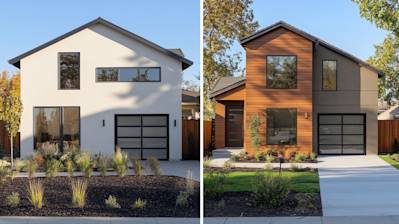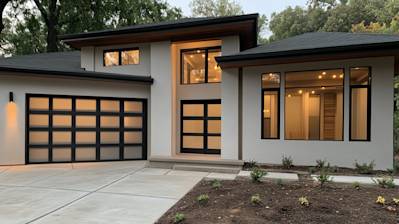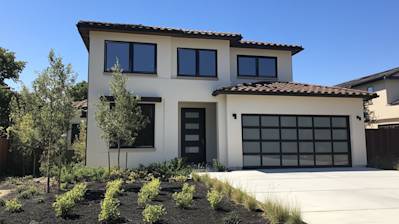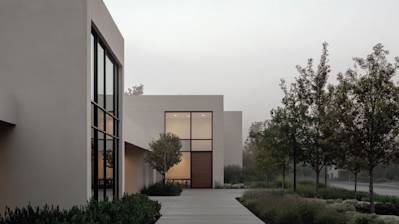When it comes to home renovation or building new spaces, many homeowners and builders have to make decisions concerning the type of material to use, specifically in terms of the walls. One material that remains prevalent in these cases is drywall plaster. Understanding what it is, how to use it, its benefits, and its variations can greatly impact your decision, possibly steering you down the path of choosing drywall plaster for your upcoming project.
Understanding Drywall Plaster
Drywall plaster, also known as plasterboard or gypsum board, is a panel made from calcium sulfate dehydrate, with or without additives, typically pressed between thick sheets of facer and backer paper. It is most often used in the construction of interior walls and ceilings. Also, it's used as a quick and economical cover for large areas, and it's easy to decorate once installed.
Applying Drywall Plaster
One of the great things about drywall plaster is its ease of installation. Essentially, to fix the plasterboard to your walls or ceilings, a plaster layer is applied between the wall and the board known as a 'dot and dab' method.
Required Tools and Materials
Some of the essential tools and materials you may need include:
- Drylining adhesive
- Bucket and mixing tool
- Spirit level
- Drywall screws
- Screwdriver or drill with phillips bit
- Tape measure
Step-by-step Guide
You first need to ensure that the area to be plastered is clean and free from dust or debris. Once you've prepared the surface and measured out where your plasterboard will go, you apply dab of adhesive to the wall and position your plasterboard onto the adhesive, checking with a spirit level that it is straight. Screw the board onto timber studs or wall plugs, making sure the screws are just below the plasterboard surface.
Benefits of Drywall Plaster
Drywall plaster offers several benefits that make it a popular choice for both residential and commercial construction. These benefits include:
-
Quick Installation: Drywall plaster can be fitted relatively quickly compared to traditional methods like plaster.
-
Cost-Efficient: Because of its quick installation, labor costs are often significantly lower.
-
Easy to Repair: Should any damage occur, repairing drywall plaster is fairly straightforward.
-
Fire Resistant: Drywall plaster can offer a degree of fire resistance, making it safer in the home.
Variations of Drywall Plaster
There are several variations of drywall plaster, each with their own unique selling points depending on your needs. Some common types include:
-
Standard Drywall: This is the most common type used and is generally available in a range of sizes.
-
Moisture Resistant Drywall: Used predominantly in high moisture areas such as basements, kitchens, and bathrooms.
-
Fire Resistant Drywall: This kind offers a higher level of fire-resistance compared to the standard.
The realms of drywall plaster offer a solution for virtually every wall and ceiling project you can imagine. From fire resistance to moisture resistance, you're sure to find a plasterboard product that's suitable for your specific needs.
Choosing drywall plaster can be a smart decision for many homeowners and builders. Its ease of application, coupled with its cost-efficiency and versatile variations, makes it a top pick for various projects. So when you're planning your next building or renovation project, consider drywall plaster as a viable option.
Frequently Asked Questions About Drywall Plaster
What are the main ingredients in drywall plaster?
Drywall plaster, often called joint compound, is mainly composed of gypsum dust mixed with water to produce a spreadable paste. Some types of joint compounds may also include polymers for enhanced binding properties, limestone for hardness, and talc for improved workability.
What tools are needed to apply drywall plaster?
You would need a drywall knife to spread the plaster, a hawk or mud pan to hold and carry plaster, a corner tool for 90-degree angled areas, and a sanding tool to smoothen the plaster surface after the application. Other tools might include a taping knife and a bucket scoop.
What is the main purpose of drywall plaster?
Drywall plaster serves a few important tasks including sealing joint gaps between sheets of drywall, covering screws or nails, and providing a smooth surface to paint or wallpaper. It's also used to repair cracks and holes in existing walls.
How long should drywall plaster dry before it's painted?
Generally, it can take one to five days for the drywall plaster to dry completely. Humidity, room temperature and the thickness of the plaster applied can all impact the drying time. It's important to wait until the plaster is completely dry before painting to avoid uneven paint application or problems with the plaster integrity over time.
What is the difference between drywall plaster and plasterboard?
Drywall plaster and plasterboard are two different construction materials. Plasterboard, also known as gypsum board, is a panel made of gypsum plaster pressed between thick sheets of facer and backer paper. It's used to make interior walls and ceilings. On the other hand, drywall plaster, or joint compound, is used to seal the joints between plasterboards and to cover any fastening elements, like screws or nails.
Can I apply drywall plaster over paint?
Yes, you can apply drywall plaster over paint, however, the paint may need to be roughened or sanded first to ensure the plaster adheres properly. If the paint is glossy or smooth, the plaster might not stick as well as it should.
Does drywall plaster shrink as it dries?
Yes, drywall plaster does shrink as it dries. The water within the plaster evaporates as it dries, causing the overall volume to reduce. Depending on how much plaster is applied, this shrinking can sometimes lead to cracks. To avoid this, apply thinner coats of plaster and allow each coat to dry fully before applying the next.
How can I repair drywall plaster?
If the hole or crack is small, you can apply a thin layer of drywall plaster over the area, let it dry, then sand it smooth. For larger repairs, you might need to attach a new piece of drywall and use plaster to blend it into the surrounding wall. Once the plaster is dry, sand it so it's flush with the wall surface and then paint.
Can drywall plaster be used on wood?
Although not a usual application, drywall plaster can be used on wood. However, it may not adhere as well and could potentially crack over time due to the different consistency and flexibility of the wood. It would be beneficial to use a primer on the wood surface before the plaster application for a better result.
Pros of Drywall Plaster
Easy Installation
One of the main advantages of drywall plaster is its ease of installation. This aspect makes it a preferred choice for construction and renovation:
-
Compared to traditional plaster, it takes less time and labor to install drywall plaster panels.
-
The process involves simply measuring, cutting, and securing the panels to the studs or joists.
-
This ease of installation helps in reducing the overall construction time.
Affordability
Drywall plaster is a cost-effective solution for covering walls and ceilings:
-
Its materials and installation costs are generally lower than other alternatives such as lath and plaster.
-
This affordability makes drywall plaster an attractive option, especially for large-scale commercial applications or budget-constrained residential renovations.
Fire Resistance
Drywall plaster offers a certain level of fire resistance which contributes to the safety of buildings:
-
Specially designed drywall plaster contains fiberglass and other materials that can resist fire for extended periods.
-
This added fire resistance can help slow the spread of fires, affording occupants additional time to evacuate the building.
Soundproofing Capabilities
Some types of drywall plaster provide effective soundproofing:
-
Soundproof drywall has viscoelastic polymers that absorb and dissipate sound waves effectively.
-
This feature makes it a preferable choice for buildings where noise reduction is a priority.
Cons of Drywall Plaster
Damage and Repair
Drywall plaster has its drawbacks as well, including susceptibility to damage and complicated repair processes:
-
Drywall plaster is prone to damage from impacts, such as holes from doorknobs or furniture.
-
It can absorb moisture, leading to issues like bulging, sagging, or even mold growth.
-
While minor repairs are simple enough, significant damages often require replacement of whole panels which could be labor-intensive and costly.
Lack of Character
Compared to traditional plaster, drywall lacks textural depth and character:
-
While it offers a crisp, clean look, it doesn’t provide the same Old-World charm or artistry as traditional plasterwork.
-
This lack of character may discourage those aiming for a distinct, historical aesthetic in their buildings.
Reduced Thermal Efficiency
Drywall plaster doesn't offer the same level of insulation as some other materials:
-
Its thermal efficiency is not as good as other types like insulating plasterboard, meaning that it may not retain heat as effectively, resulting in higher heating costs.
-
This factor should be considered when choosing drywall for buildings in colder climates.
Limited Moisture Resistance
Standard drywall plaster is not well-suited for high-humidity environments:
-
While there are moisture-resistant versions available, standard drywall can be easily compromised by moisture.
-
If exposed to water or high humidity, it may warp, discolor, or develop mold.
-
This makes it less suitable for areas like bathrooms, basements, or kitchens without proper ventilation.
Summary
So we've established that drywall plaster offers a cost-effective, efficient and versatile solution for interior home finishes. It's designed in a way to adjust to varying room temperatures and moisture levels, making it ideal for almost all types of climates. A wonderful alternative to traditional plastering methods, it ensures a smoother and quicker finish which is awe-inspiring.
The use of drywall plaster isn't limited to professional builders; in fact, anyone with a do-it-yourself spirit can learn the basics and put up drywall. With the right tools, safety measures and patience, it makes tackling home projects a whole lot easier. So, next time you've got to patch a hole or build a new wall, remember this magic stuff.
Regardless of your future renovation or building plans, it's essential to be informed about your choices. Knowing about drywall plaster has hopefully given you an insight into one such option. It's now up to you to consider its benefits and see how this could potentially enhance your living spaces. And who knows - you might just fall in love with the smooth finish and ease it brings to your project.
About Atlas Stucco
Meet Atlas Stucco, your trusted Sacramento, CA's stucco solution. We're not just a business, we're a family of experts and artisans bringing dreams to life on the canvas of your home or office. Using the perfect blend of technology, materials, and craftsmanship, we masterfully design and install high-quality stucco finish. We pride ourselves on granting perfect finishes, exceptional customer service, and genuine hands-on care for every project we handle. So, sit back, relax and let Atlas Stucco spruce up your dwelling or workspace!
Tags: drywall plaster, plaster techniques, drywall finishing,








